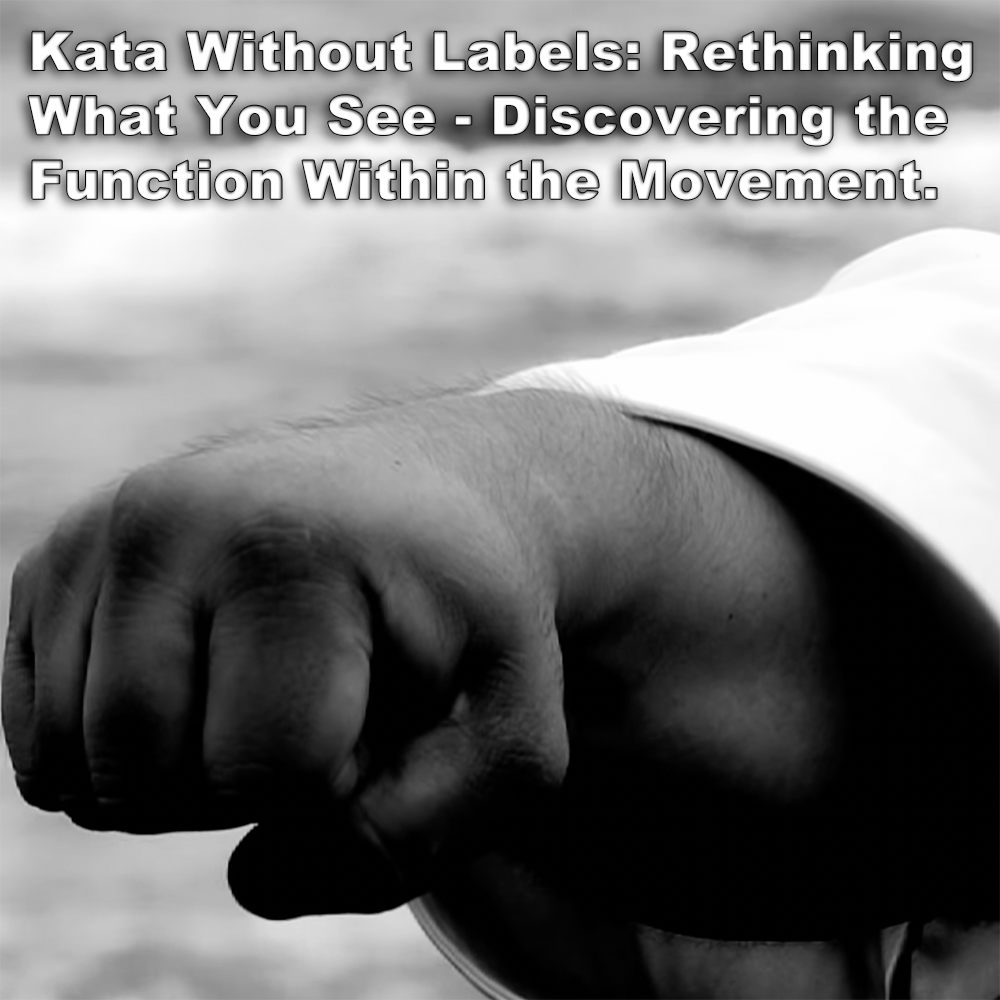
(Approx 2 minute 40 second read)
Take a single technique from any kata – a reverse punch (gyaku-zuki). Most people think of it as just a punch. But what if it’s more? What if that basic movement – seen in countless kata – is a tool that goes far beyond striking? And of course, gyaku-zuki doesn’t have to start from the hip.
.
The rear-hand punch is basic, familiar, and widely used. You’ll see it in karate, kung fu, boxing, MMA – anywhere someone stands in front of an opponent and throws a rear-hand strike. It’s almost universal. So we can agree: it’s useful.
.
Now ask yourself – if that’s true of one movement, what about the others?
.
What if you took more of these kata techniques and examined them in isolation? Stripped of ceremony, stripped of labels – are they useful too?
.
When we call something a punch, we mentally restrict it to just that. But if the hand is closed, could it be grabbing something? Could it be a push? Could the extending or retracting arm be used to strike with the elbow – or to guard against an incoming blow? Could it be something else?
.
It’s essentially the same movement. But now it’s doing something entirely different.
.
That’s the trouble explaining kata to those who don’t understand – or don’t want to. The moment you label a movement, you restrict its usage. But if you throw away the name and look at what the body’s actually doing, things change.
.
Suddenly kata doesn’t look like a rigid sequence of blocks and strikes. It starts to resemble a toolkit. Even if the useful piece is the last movement in the kata, ignoring everything before it is fine. The rest isn’t wasted. It’s waiting.
.
From the outside, kata might look like a choreographed dance – to use the word often sent my way. But extract what you need – just like picking letters from the alphabet to form a word – and it becomes something entirely different.
.
You don’t recite the whole alphabet every time you speak. But the letters are there, ready when you need them.
.
That’s how kata works too.
.
Imagine for a moment I was teaching you 150 years ago – not choreography, not ritual, but how to protect yourself. I show you how to strike, grab, push, elbow – all within one movement.
.
Then I show you others. You learn the full system. We record it the only way we can – through kata, the solo representation of the principles and techniques you’ve learned.
.
Think of a boxer shadow boxing. It’s his version of kata – just constrained by different rules. A smaller vocabulary, perhaps. Karate’s kata, on the other hand, is the whole language. Punches, kicks, throws, locks, unbalancing, pulling, pushing, head-butting, eye gouging, biting – it’s all there, buried in plain sight.
.
Still don’t see it?
.
Then try this. Take one or two movements from any kata. Forget the names. Forget the explanations you were given. Put someone in front of you – someone who wants to push you with one hand while trying to punch you in the head with the other, one of the most common attacks.
.
What can those movements do now?
.
If the answer is “maybe more than you thought”, then perhaps kata still has something to teach.
.
I often see posts on social media showing ten or more hand techniques, each with a different name. But look closely – most of them have the same starting point. Only the ending changes. Different outcomes, same engine. Adapt the same technique rather than have ten different ones. Do you see?
.
Look beyond the meaning in the labels – and start finding it in the movement.
Is shadow boxing of no use to the boxer? If you didn’t know what an uppercut looked like, or an overhand right, or a jab – all linked together – would you say it looked useless?
.
Maybe kata is not the problem – just the way you look at it.
.
.
Written by Adam Carter – Shuri Dojo
